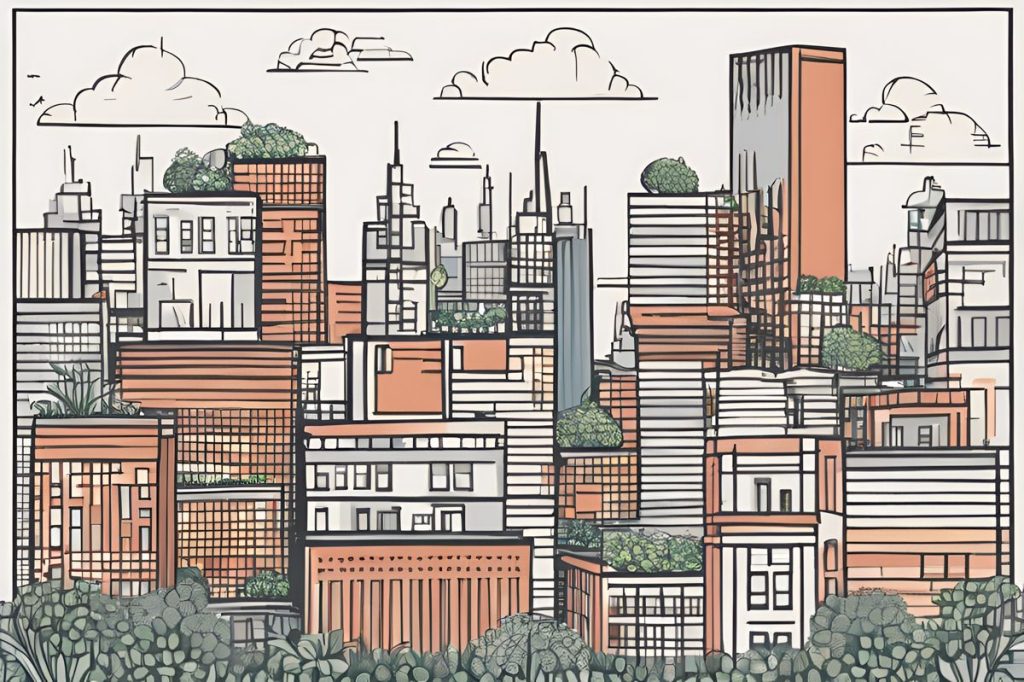Rooftop gardens combat urban heat islands by serving as natural insulation and creating pockets of lower air temperature. Planted roofs not only cool urban areas but also regulate climate, improve air quality, enhance biodiversity, reduce noise pollution, and contribute to mental health.
How do rooftop gardens help combat urban heat islands?
Rooftop gardens serve as natural insulation, cooling urban areas by creating pockets of lower air temperature. They help regulate urban climate, improve air quality, enhance biodiversity by providing habitats for wildlife, and reduce the urban heat island effect. Additionally, they contribute to mental health and reduce noise pollution.
The Urban Challenge and Green Roof Solutions
In the face of rapidly increasing urbanization, cities are becoming concrete jungles with limited green spaces. Environment Commissioner Antonia Theodosiou has raised concerns about urban heat islands: areas where temperatures soar due to heat trapped by buildings and roads. During a technical lecture organized by the Technical Chamber Etek, Theodosiou emphasized the urgent need to adapt to the climate crisis. She suggested that rooftop gardens could play a vital role in countering the lack of ground-level greenery.
Theodosiou pointed out that most human activities are concentrated in urban areas. Hence, she argues that it’s imperative for urban policies to focus on innovative techniques to limit the adverse effects of climate change. Studies in recent years have explored managing urban spaces in a way that makes cities both sustainable and resilient. This includes ensuring cleaner air and creating a more liveable environment for city residents.
Green Roofs as Bioclimatic Tools
Planted roofs don’t just offer an aesthetic upgrade; they also provide numerous environmental benefits. By introducing vegetation at height, green roofs act as natural insulators. They cool cities by creating pockets of lower air temperature, effectively regulating urban climate. These microclimates not only improve air quality but also contribute to the well-being and mental health of the inhabitants.
Moreover, rooftop gardens serve as sanctuaries for various species, enhancing urban biodiversity. They attract birds, insects, and microorganisms, while offering city-dwellers a chance to reconnect with nature. As bioclimatic management tools, green roofs reduce the urban heat island effect and the accumulation of heat in urban landscapes.
Encouraging Urban Green Habits
Theodosiou encourages cities to foster green habits among their residents. This includes the use of sustainable public transportation and promoting activities that have zero ecological impact. The integration of green roofs into urban planning can help reclaim public spaces, especially in densely populated city centers. Beyond their environmental benefits, green roofs also contribute to noise pollution reduction.
Collaboration among service providers, licensing authorities, architects, engineers, and other professionals is crucial for integrating green roofs into urban development. Theodosiou calls for the establishment of regulations that encourage the adoption of green roofs and incentives to support this green initiative. She highlights the importance of raising awareness and providing technical information to both professionals and the general public.
The Role of Green Roofs in Urban Planning
In addition to advocating for rooftop gardens, Theodosiou suggests that a concerted effort is needed to integrate this practice into broader urban planning and development policies. It’s not just about creating green spaces but also about improving comfort levels and reducing heat stress among urban populations. By incorporating planted roofs into city planning, there’s potential to significantly enhance the quality of life for residents.
As urban areas continue to expand, the importance of sustainable development becomes increasingly clear. Green roofs represent a promising solution to the challenges of urbanization. They offer a way to simultaneously address environmental concerns and improve the livability of cities for future generations.
What are the benefits of rooftop gardens in combating urban heat islands?
Rooftop gardens help combat urban heat islands by serving as natural insulation and creating pockets of lower air temperature. They regulate urban climate, improve air quality, enhance biodiversity, reduce noise pollution, and contribute to mental health.
How do rooftop gardens contribute to biodiversity in urban areas?
Rooftop gardens act as sanctuaries for various species, attracting birds, insects, and microorganisms. By providing habitats for wildlife, they enhance urban biodiversity and offer city-dwellers a chance to reconnect with nature.
How can cities encourage green habits among residents to promote sustainability?
Cities can encourage green habits by promoting the use of sustainable public transportation and activities with zero ecological impact. Integrating green roofs into urban planning can reclaim public spaces and contribute to noise pollution reduction, fostering a more sustainable urban environment.
What role do green roofs play in broader urban planning and development policies?
Green roofs can significantly enhance the quality of life for urban residents by improving comfort levels, reducing heat stress, and addressing environmental concerns. By incorporating planted roofs into city planning, cities can work towards sustainable development and create more livable environments for future generations.

